This post may include affiliate links.
If you make a purchase, I'll earn a small fee at no extra cost to you.
You can grow delicious, sweet carrots in your garden or in containers. Learn how to grow carrots from seed, which types of carrot are best for home gardeners, and how to ensure a great harvest.
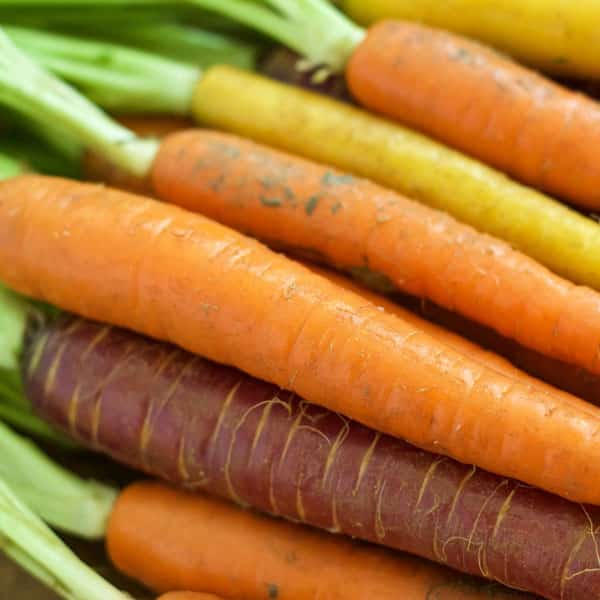
Our family loves carrots, and we love growing our own carrots in our garden! This year, we tried three different varieties and enjoyed eating every single one.
I’m sure you know that carrots are healthy, but there’s more to them than just Vitamin A. Carrots are a good source of fiber, are low in calories, and have a low glycemic load (which means they don’t raise blood sugar much).
Carrots are portable, tasty, and easy to eat–you don’t even need to peel them. A quick scrub with water and a vegetable brush is all they need. Let’s get growing!
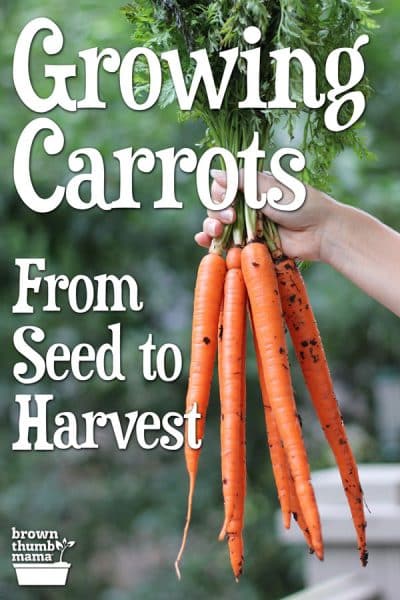
Sun, Water, Soil
Carrots need full sun to thrive, which means at least 6 hours a day. Mine get sun all day and shade in the early evening, which has worked out great.
Carrots need regular watering to sprout and grow. I use a spray sprinkler attached to my drip line (carrots are one of the few crops that I use a sprinkler for). Water about two inches per week once they have sprouted.
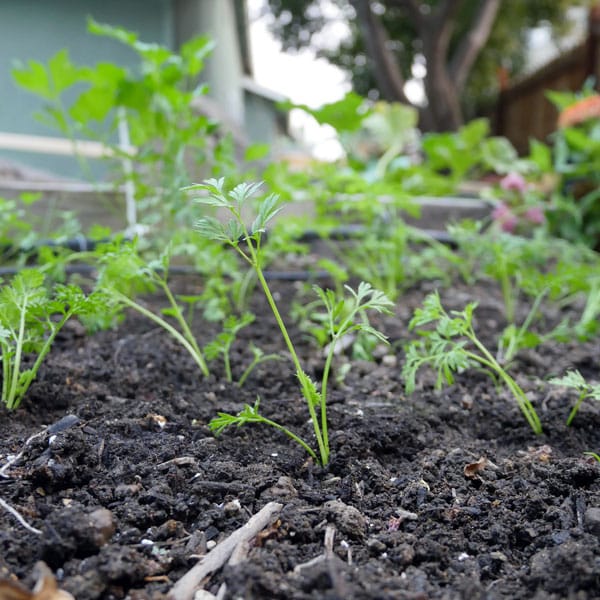
Loose and well-worked soil is critical for growing carrots. It needs to be worked much deeper than the soil in the rest of your garden–18 inches deep is ideal. If the carrots don’t have room to grow, they’ll be stunted or twisted.
I use a Garden Hoe for planting, ensuring the soil is deeply aerated and any rocks are uncovered. I also use it to mix in a bunch of homemade compost to give the carrots an extra boost.
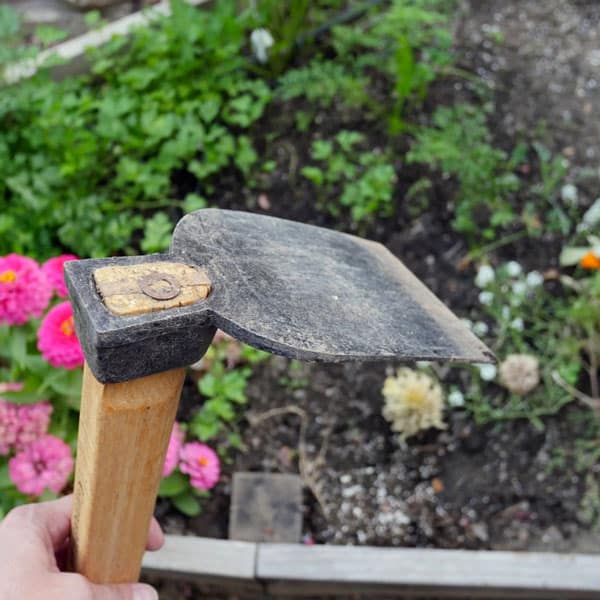
Varieties
There are so many more types of carrots than the variety sold at the grocery store. Your family will love growing and eating all of these!
By the way: did you know that baby carrots aren’t actually young, tiny carrots? They are cut from longer carrots and scraped down to size. But you can have baby carrots by harvesting your carrots early, before they are fully grown.
Here are some of my favorite carrot varieties:
Danvers carrots, like Danvers 126 are from 6-8” long and are somewhat thin. They are resistant to cracking and splitting, so they’re ideal for times when presentation matters.
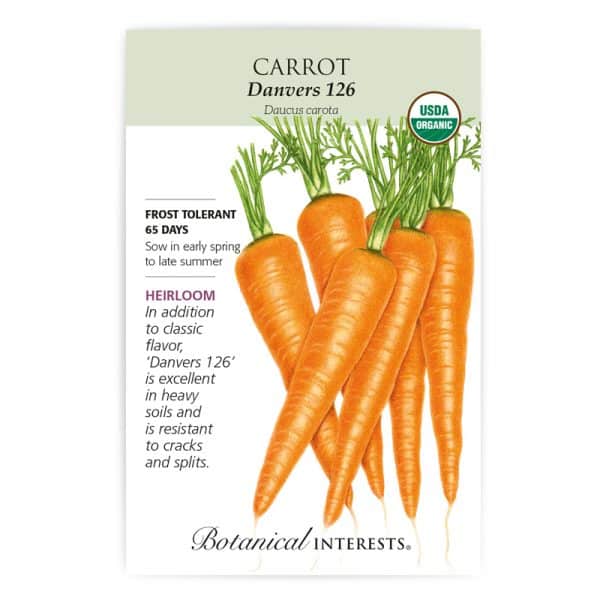
Nantes carrots, like these Scarlet Nantes are 6-7” long, cylindrical, and don’t have a tapered end. Nantes carrots are mild and sweet, and can be eaten raw or cooked.
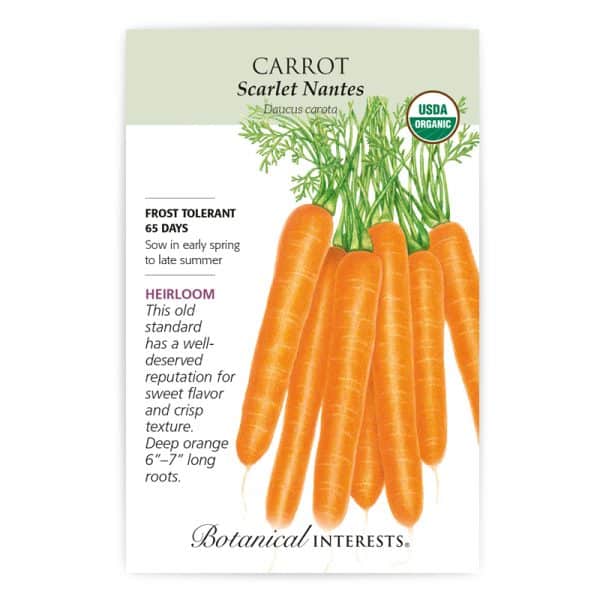
Carnival Blend carrots are a fun, colorful blend mix of Danvers and Nantes varieties. They are purple, orange, yellow, and white.
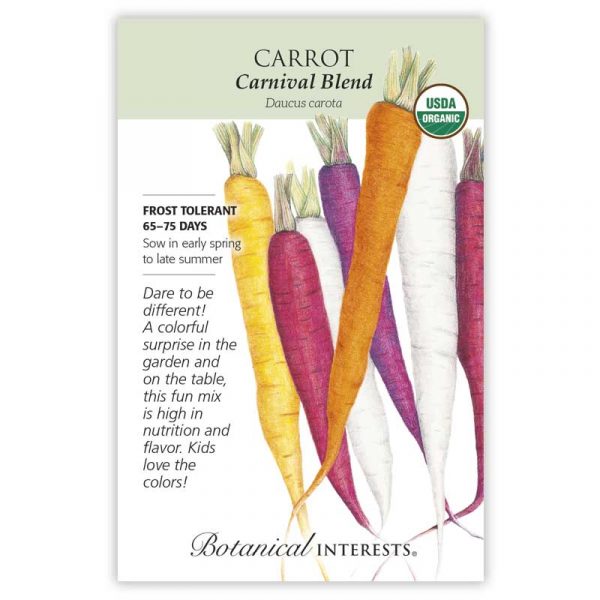
Imperator carrots are the variety sold at the store. They have long roots (up to 10”) with tapered ends. These Atomic Red carrots are unlike anything you’ll find at the store, though! Cooking intensifies their red color.
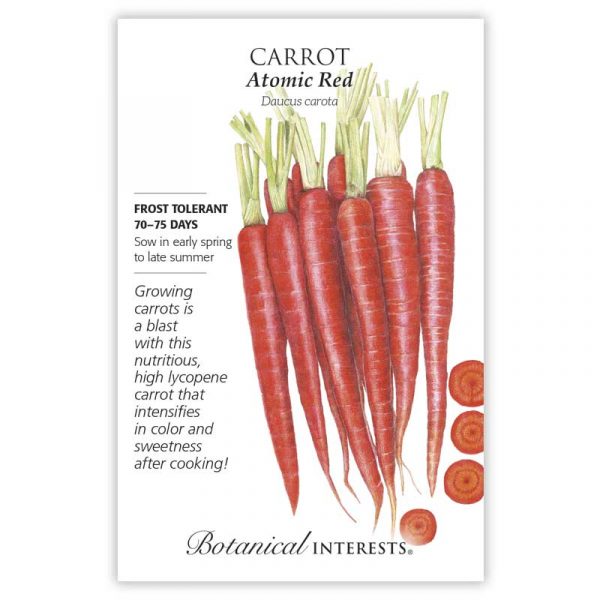
Rainbow carrots are a cross between Nantes and Imperator, and they are coral, yellow, and white. They grow to a uniform size, so they’re ideal for pickling or canning.
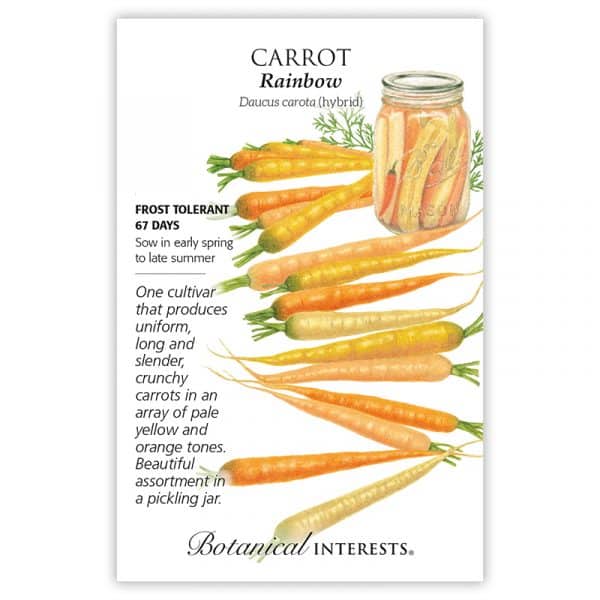
Chantenay carrots, like Red Cored Chantenay are about 5-6” long, and are fat with a tapered end. Chantenay carrots are sweet and crunchy, and good for storage.
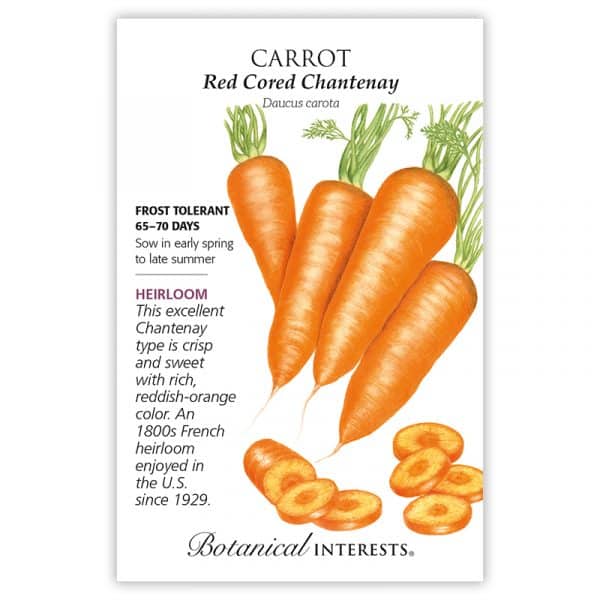
Tonda Di Parigi is a small, naturally round carrot. Because of its small size, it’s great for growing in containers. (Learn more about container gardening here.) Even though it’s small, it has big carrot flavor.
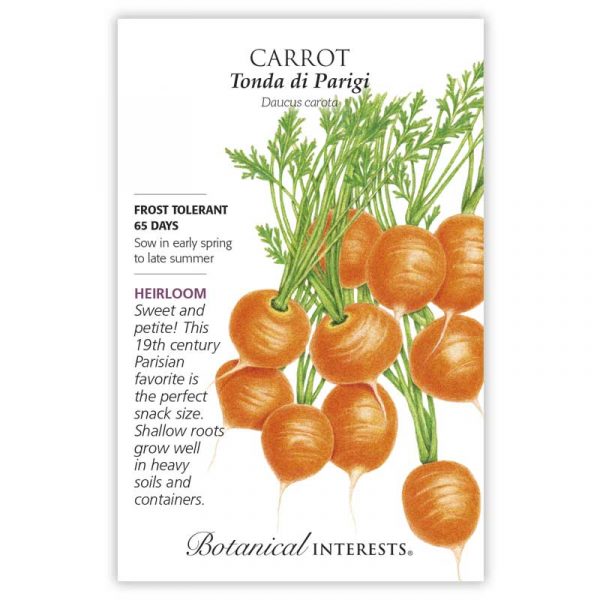
Planting & Spacing
Plant your carrot seeds directly in the garden (they can’t handle being transplanted). Plant them ¼ inch deep and keep the soil moist until they sprout. You might need to water a couple times a day during hot spells–a kids’ watering can is perfect for this, because it won’t wash the seeds away.
Carrot seeds are tiny! And I’m not just saying that because of my 40+ year old eyes. If you aren’t careful, you’ll have a clump of carrots growing together that you’ll have to thin. Use homemade seed tape or this seed sower gizmo to space the seeds out properly.
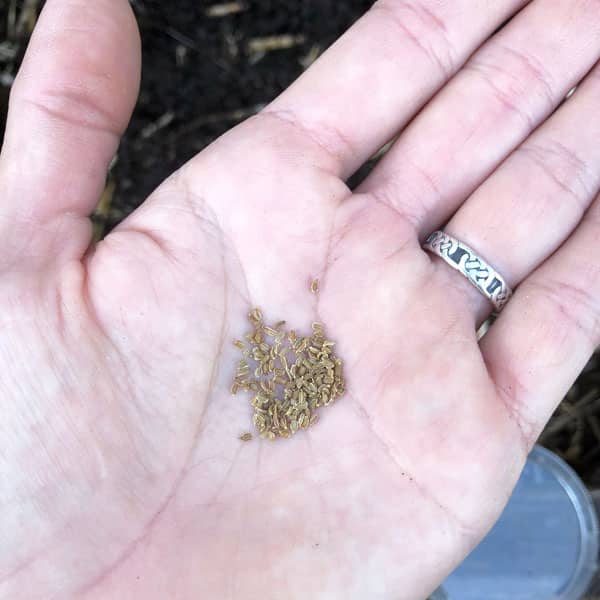
Seedlings appear in 10-20 days. If you’re lucky enough to need to thin them, you want 1 carrot every 2 inches. If you don’t thin them, you could end up with tangled carrots like this.
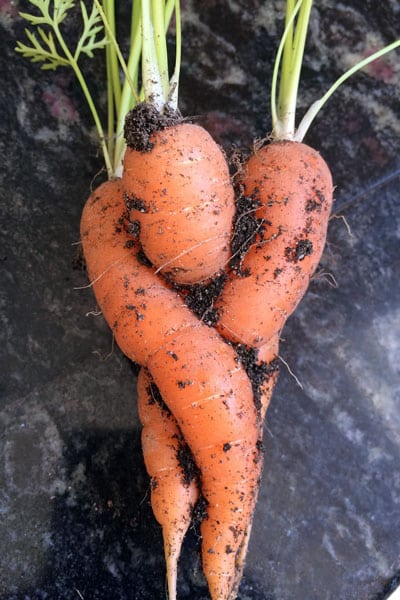
I like to plant a new carrot patch every 3 weeks or so–this is called succession planting. Then there are always some carrots ready to harvest, and I’m not inundated with a ton of them all at once.
Pests, Diseases, Companion Plants
Thankfully, I haven’t had a problem with critters eating my carrots. However, there are a few things to watch out for.
Carrot rust flies are a relatively common pest, but the flies themselves aren’t the problem. Their larvae are the ones that tunnel into the carrots, leaving behind a dark brown groove in the carrot. The best ways to prevent carrot flies are to practice crop rotation and companion planting.
Flea beetles are, as the name implies, tiny jumping bugs. They like to eat just about every vegetable in the garden, and they riddle leaves with small feeding holes. If you find them, treat with a healthy spray of neem oil.
Wireworms are click beetle larvae, and they overwinter in the soil. Besides practicing crop rotation, you can also apply beneficial nematodes when planting. These naturally-occurring microscopic parasites attack and destroy developing pests in the soil.
Harvesting
When’s the best time to harvest carrots? My kids would say, “Just before dinner.”
While this is true, a few additional tips will help you know when to pull your carrots:
Smaller carrots usually taste better. Carrots don’t “ripen,” so you can pull them and eat them anytime after planting.
The usual harvest size is when the tops are about ¾ inch to 1 inch in diameter. Most of the time, the top will pop out of the soil, like this.
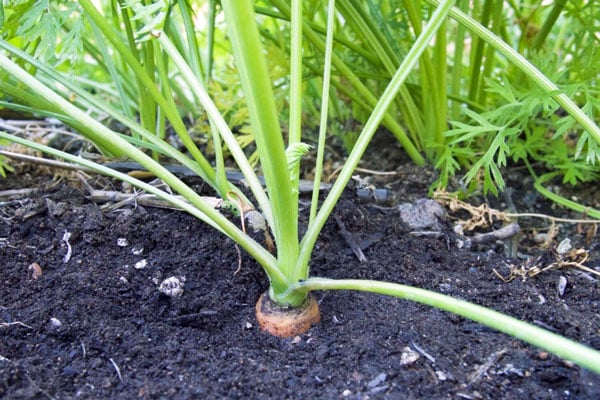
The soil should be damp when you harvest, to make it easier to pull the carrots. Carefully loosen the soil, then pull the carrot straight up.
Don’t store carrots with the tops on, since the tops will pull sugars from the carrot. Chop off the tops and make pesto with them (yes, really!) or toss them in your compost pile.
Enjoy your homegrown carrots fresh from the garden or in this delicious Summertime Slaw!
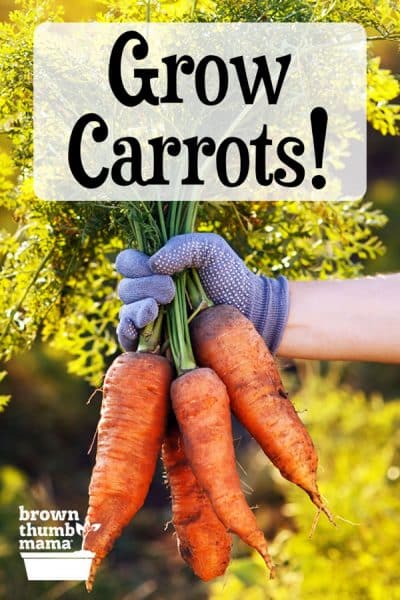

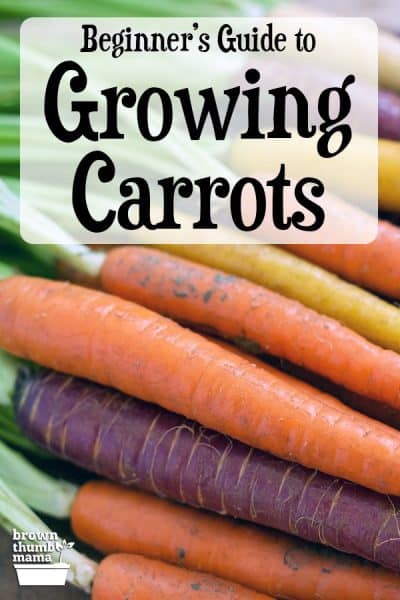

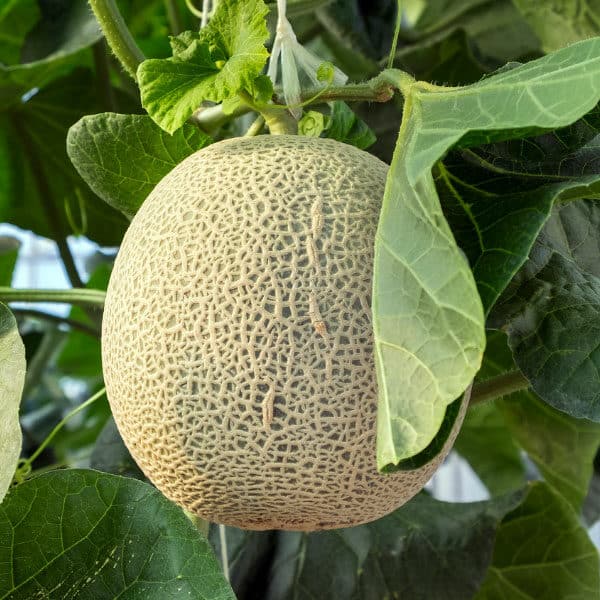
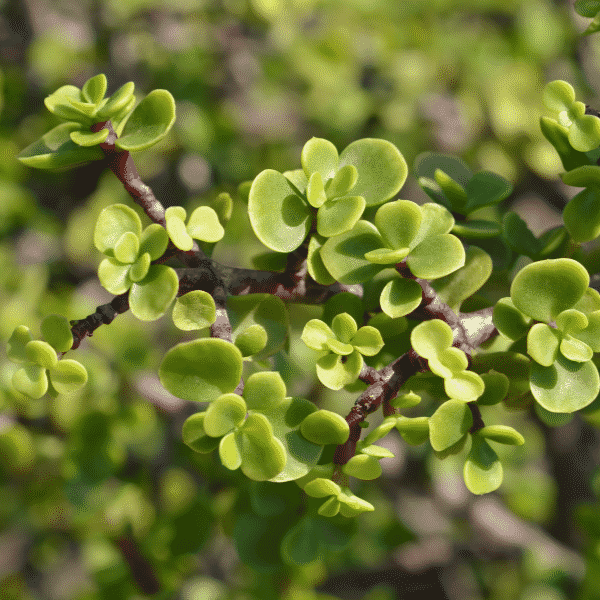
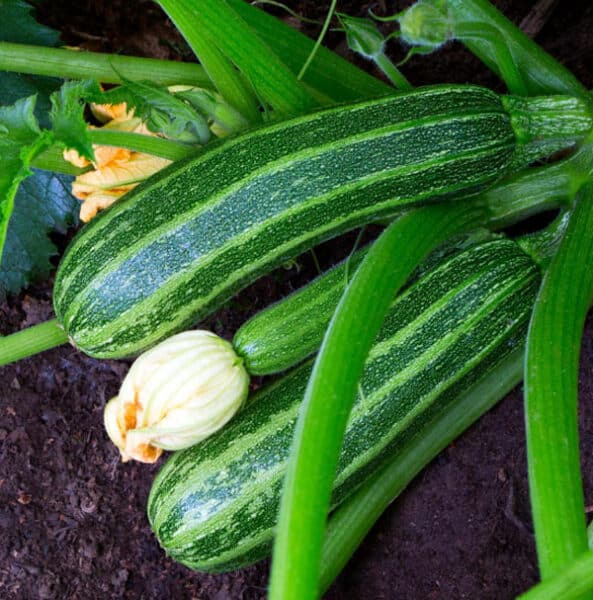
Can you plant carrots in the desert winter months?i live in Las Vegas and maybe it’s best to plant the seeds in late March?
How many carrot seeds do you sow in one hole?